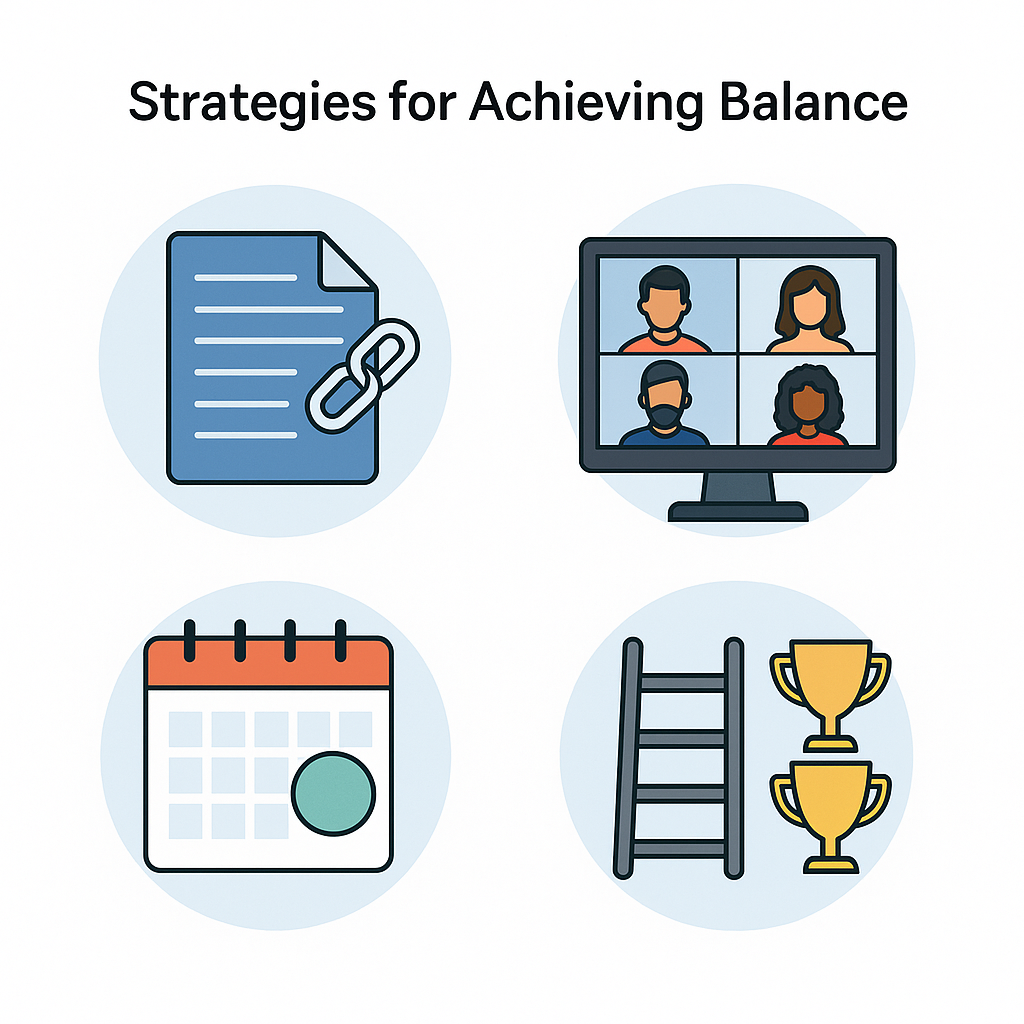Estimated reading time: 9–10 minutes
Hybrid work is no longer an experiment. For tech companies, it has become a defining feature of how engineering teams are built and managed.
Yet finding the right balance between remote flexibility and in-office collaboration remains one of the toughest leadership challenges today. Done right, hybrid setups can unlock global talent, reduce costs, and keep teams agile. Done poorly, they can create silos, erode culture, and slow down product delivery.
Yet finding the right balance between remote flexibility and in-office collaboration remains one of the toughest leadership challenges today. Done right, hybrid setups can unlock global talent, reduce costs, and keep teams agile. Done poorly, they can create silos, erode culture, and slow down product delivery.
This article explores what the future of hybrid tech teams looks like — and how companies can structure their engineering organizations to thrive.
Table of Contents
- Why Hybrid is Becoming the Default Model
- Key Advantages of Hybrid Engineering Teams
- Common Challenges and Pitfalls
- Strategies for Achieving Balance
- Tools and Practices for Seamless Collaboration
- What Hybrid Means for the Future of Hiring
1. Why Hybrid is Becoming the Default Model
The pandemic accelerated remote adoption, but even as offices reopened, many companies resisted going “fully back.” Hybrid has emerged as the default, blending distributed engineering talent with in-office contributors.
As the Financial Times points out, organizations across industries are redesigning their models to maintain flexibility without sacrificing collaboration. For example, brainstorming and whiteboard sessions still benefit from in-person interaction, while deep coding sprints and QA testing are often more efficient in quiet remote environments.
2. Key Advantages of Hybrid Engineering Teams

Hybrid work isn’t just a compromise — it’s a competitive advantage when managed well.
- Global talent access: By mixing in-office staff with remote specialists, businesses can find niche skill sets that aren’t available locally.
- Cost flexibility: Hiring remote engineers, especially from regions like Latin America, can cut budget pressure without reducing quality. (See our guide on How to Hire Developers From LatAm and Save Up to 63% Hiring Budget).
- Improved resilience: If one hub faces disruptions — like political instability or local talent shortages — distributed teams keep projects moving.
- Employee satisfaction: Developers increasingly expect flexibility; hybrid setups can help retain top talent.
3. Common Challenges and Pitfalls
Hybrid work brings opportunities, but also risks. Without intentional design, companies can easily lose productivity.
- Time-zone misalignment: Distributed developers may have only small overlapping windows with HQ.
- Unequal access to information: Remote staff often feel like second-class participants if key conversations happen in-office.
- Cultural fragmentation: Teams can drift into “us vs. them” mentalities if managers don’t foster unity.
- Overcomplicated processes: Too many tools or unclear workflows can create unnecessary friction.
The challenge is not simply “allowing hybrid,” but actively engineering a culture where remote and in-office developers feel equally empowered.

4. Strategies for Achieving Balance
To avoid the pitfalls, companies need hybrid to be designed, not accidental. That means:
- Document-first communication: Important decisions should live in shared, accessible platforms (e.g., Confluence, Notion) rather than hallway chats.
- Clear meeting policies: Every meeting should default to remote-first — meaning everyone dials in, even if some are sitting in the same office.
- Intentional in-person time: On-site collaboration days, quarterly offsites, or hackathons should be scheduled deliberately for high-value interactions.
- Equal growth opportunities: Promotions, recognition, and leadership tracks must remain equally available to remote employees.
5. Tools and Practices for Seamless Collaboration
Hybrid teams rely heavily on the right tool stack. But beyond software, it’s the practices that matter most.
- Async project tracking: Platforms like Jira and Linear help distributed developers work without waiting for daily check-ins.
- Shared visibility: Dashboards in tools like GitLab or Trello keep progress transparent.
- Hybrid-friendly culture: Adopting rituals like “daily written standups” or “weekly demo recordings” ensures both remote and in-office staff remain aligned.
And as Barron’s highlights, hybrid work is proving not only sustainable but also efficient. Productivity has remained stable, and many employees are even willing to accept a pay cut for the benefit of flexibility.
6. What Hybrid Means for the Future of Hiring
Hybrid isn’t a stopgap — it’s the long-term model for most tech companies. Leaders must rethink how they source, onboard, and retain talent in a world where “location” is no longer the primary filter. Companies that master hybrid will not only save costs but also accelerate time-to-market by assembling the right team, regardless of geography.
In the coming years, expect to see:
- More regional hubs where companies blend local leadership with distributed coding teams.
- Rising demand for managers trained in cross-border collaboration.
- Stronger emphasis on async-first communication as the default.
Looking to scale more efficiently? Connect with iDelsoft.com! We specialize in developing software and AI products, while helping startups and U.S. businesses hire top remote technical talent—at 70% less than the cost of a full-time U.S. hire. Schedule a call to learn more!





